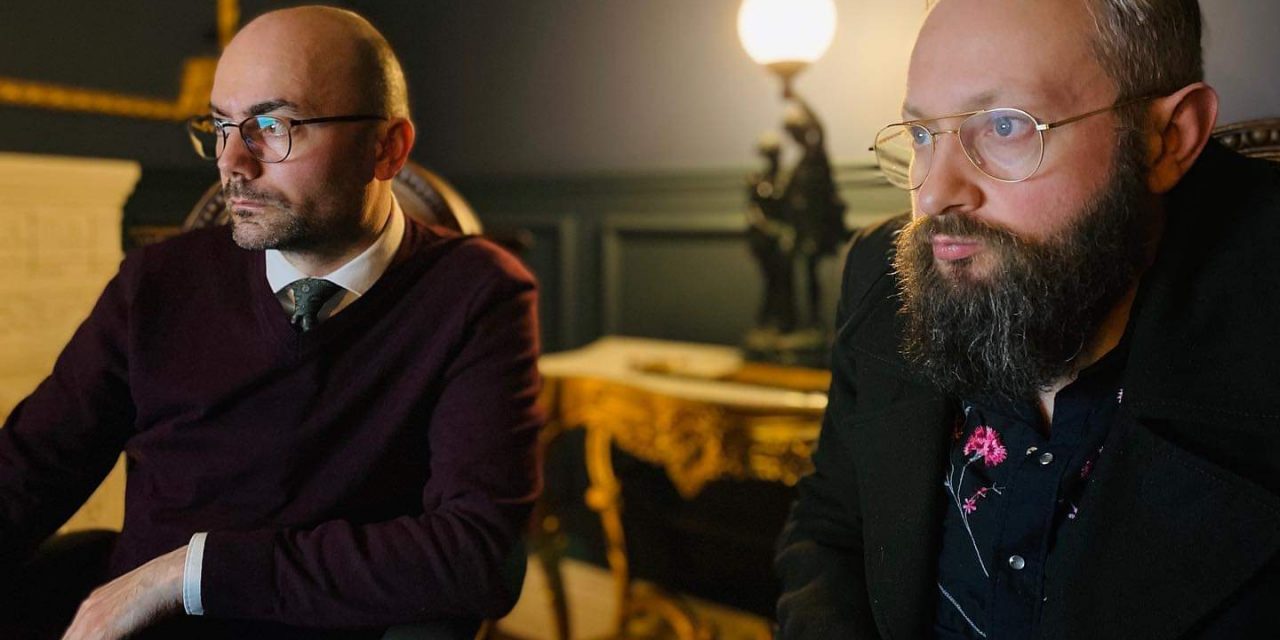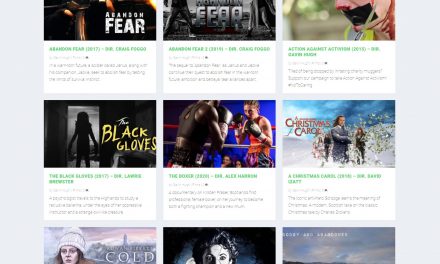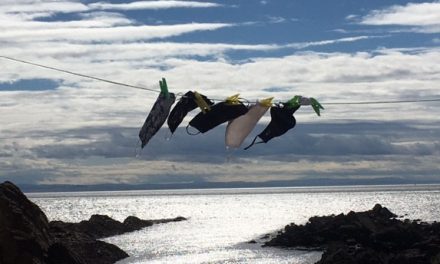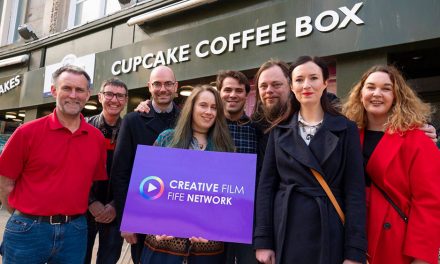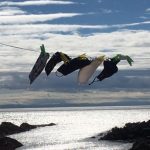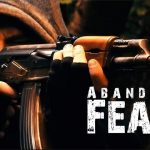Filmmaker and film journalist Sam Ashurst recently moved from London to Fife to further his filmmaking career. In his first blog post for the Creative Film Fife Network, he tells us why.
If I want to discuss what brought me to Scotland, I need to talk about what inspired me to become a filmmaker.
I’d worked as a journalist for around ten years when I first stepped behind the camera. I’d interviewed my heroes, people like David Lynch, Quentin Tarantino, David Cronenberg, and they’d all taught me something about how to make a movie. It was the world’s weirdest film school.
But my real hero was my stepfather, Couze. A professor of cultural studies, Couze had travelled to Britain from Mauritius in 1961 to study maths at St Andrews. But he was more interested in philosophy. As one of the originators of the journal Ideology & Consciousness, he was one of the first people to translate French theorists such as Michel Foucault and Jacques Lacan into English.
He is, by far, the cleverest man I’ve ever known. We’d discuss music, culture, politics, and – of course – film. The last film we saw on the big screen together was Wild Strawberries, the Bergman movie.
He was also incredibly kind. After his cancer diagnosis, I would endeavour to go home to Devon, where he and my mum had settled, as much as possible. On those visits, he would give me surprise gifts – random things he’d pick up doing his daily shop.
Even after he had a scare, unexpected pain that took him to hospital, he went out soon after (without telling us – we wanted him to rest; he would never rest), and returned with a couple of books for me he’d picked up at a market. One was about the history of Dracula, the other was a collection of short stories set in the earliest days of cinema.
I was still freaked out by the scare. As it turned out, he would defy doctors’ expectations and go on to live years longer than they predicted, but it didn’t feel that way at the time.
I was holding my new books when I asked him, ‘What do you want me to do with my life? What would make you proud?’
He thought for a moment, and replied: ‘Write for yourself. I know it’s your job, but I want you to be creative for yourself. I still remember that short story you wrote, what, fifteen years ago? Do more of that.’
As I said, he was kind and clever. I didn’t realise at the time, but that was the wisest possible advice he could have given. He knew how worried I was, he knew that being creative would help take my mind off the situation, and he knew he could have said pretty much anything at that point, and I would have done it.
So I wrote. I wrote my first feature screenplay, and directed my first short film, Hell’s Garden. It was made in a few hours for fun, with mates, but it made it into FrightFest, and became the first short film ever to win ‘Best Scare’ at the annual FrightFest Awards. Couze was, as you’d expect, proud.
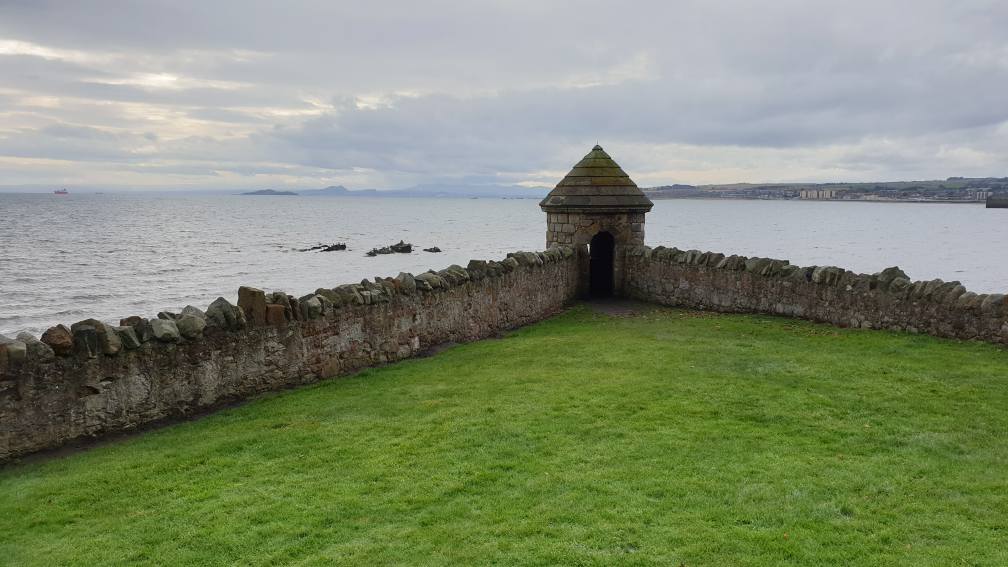
That was in 2016. In 2017, I was commissioned to make a music video for Channel 4’s Random Acts. It was the first money I’d been given as a director, and I was to spend it on a pitch I’d made – a spoof of James Cameron’s Terminator movies (only James Cameron has made Terminator movies, and there hasn’t been one since Terminator 2: I will not hear any different).
I had around £2k to make something for the Random Acts YouTube channel – me and 200 others. For the first time, I had proper crew, not just friends who’d offered to help out. The video was a success, and Channel 4 surprised me by promoting it to television, as part of the main series, where it premiered. Couze was, again, proud.
Then I decided to make my first movie. I was a bit stuck – it was the classic Catch 22 of film funding; I had a script that people liked, but I hadn’t directed the first film that would prove I could direct my first film… so no-one was willing to back my first film. The ultimate vicious circle.
On the set of the Random Acts video, I’d looked around me, at my crew, and thought ‘I have everything I need to make a film, if only I could make a film in a day.’ I felt I could raise a £2k budget alone, if only it was possible to make something that quickly. I was tired of waiting for approval to make my film – I just wanted to make one, I needed to make one.
I discussed it with a friend, and he passed on some advice he’d been given. ‘If you want to make a movie in a short space of time, option a play. It’s a story delivered concisely, with actors who know how to do it.’
I knew that James Swanton had a one-man Frankenstein he’d been performing on stage, and I’d worked with him briefly on something else, so I knew the camera loved him.
I asked him to send me the play, titled Frankenstein’s Creature. It was about death, legacy, being an outsider, and it moved me profoundly.
It reminded me of the ‘tears in rain’ speech in Blade Runner, a film Couze had shown me when I was too little to understand the sadness and regret that soaked that monologue.
So, I asked to option James’ play, and I was lucky enough to be trusted with it. Then, I had to think about how to adapt it.

I knew the 200th anniversary of the book’s publication was coming up, so decided to shoot it on the same day. We’d approach it as though we were making a feature-film in the 1800s – use German expressionism as an influence, shoot it in the proscenium style with the camera locked, and have Georges Méliès style dissolves to keep things visually interesting. Oh, and the performance would be uncut. For 90 minutes.
The film would go on to premiere at FrightFest, it was the first to sell out that year, and it was compared to Bergman and Tarkovsky in the Q&A afterwards. Couze was too unwell by this point to come to the screening, but his son did – my brother – and my sister, and her partner. They were all proud.
Enter Lawrie Brewster. I’d met Lawrie for the first time in 2016, and we hadn’t really got on. In fact, we’d had a pretty big argument. But I’d followed Hex anyway, because their taste and my taste were essentially exactly the same. And I’d learned, through film journalism, that just because you didn’t like the person, didn’t mean that you couldn’t like their art (sorry Lawrie).
Cut to the Cannes Film Festival in 2018. It’s a few months after we’d shot Frankenstein’s Creature, and I’ve just bumped into Lawrie, and Michael Brewster, and Sarah Daly in the UK pavilion (basically, a beach tent where all the UK folk hang out and drink tea). I was nervous, because of the bad blood between us, and decided to swallow my pride and apologise for my (key) role in our row.
It was then I got my first of many lessons about Lawrie Brewster: he doesn’t hold a grudge. Instead, he paid respect to the approach, and the apology. I showed him some stills from Frankenstein’s Creature, and his eyebrows raised. He asked to see the film. I sent it to him.
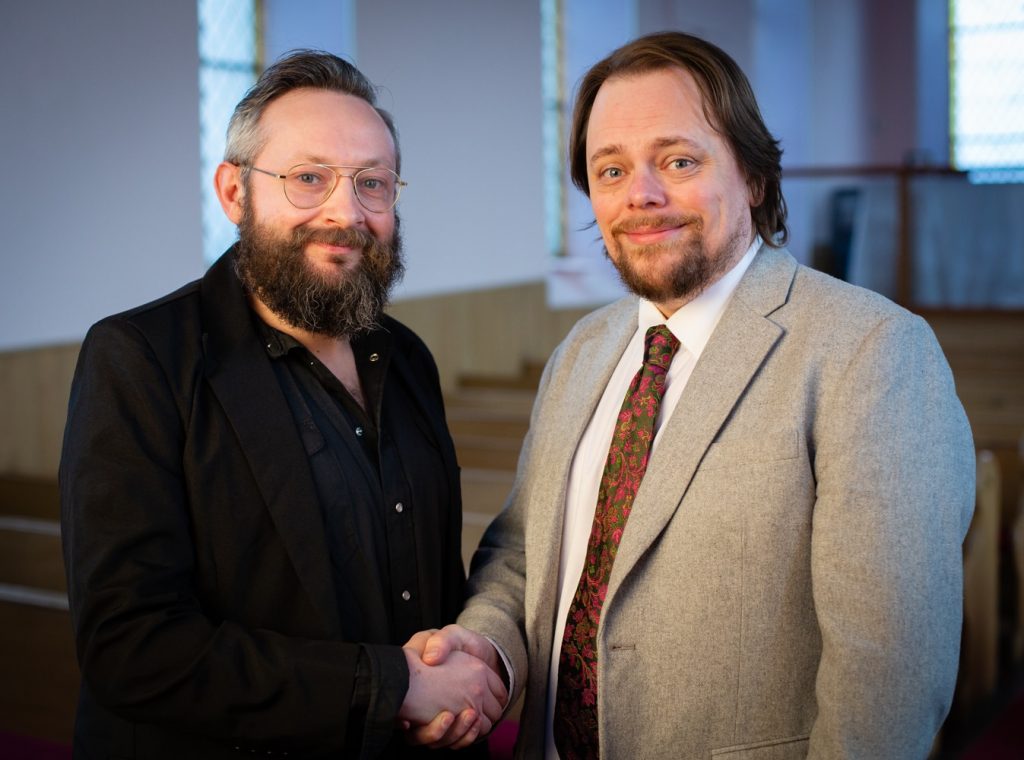
That transformed into one of my favourite ever Cannes trips. After that, it was the four of us, basically inseparable. They told me about their plans for Hex, and I was awe-inspired. They told me about what they’d already achieved – their company, their studio, their church – and about the benefits of making films in Fife; the people, the locations, the breadth of talent. I was seriously overwhelmed… Then I went back to London.
We carried on talking though, and Hex ended up distributing Frankenstein’s Creature after its FrightFest premiere. We released a limited run of 200 DVDs, to continue celebrating the fact we’d made it on the 200th anniversary. The discs ended up selling out in the pre-order stage, which was amazing, a testament to Hex’s marketing abilities.
But what meant much more was the fact Hex sent out the discs a little earlier than they’d promised, as a treat for the fans who’d bought it. Couze was dying at this point, and the early release of the film meant he received his copy. Any later, and he wouldn’t have seen it. My mum sent me a picture of him holding it, like I’d held those books a couple of years earlier. For the first time since I started on this filmmaking journey, I stopped, took a moment, reflected on what I’d done, and felt proud.
Cut to Cannes 2019, a couple of months after Couze had passed away. I was a little lost, grieving, unsure about what to do next. Again, Lawrie, Michael, Sarah and I spent time together – and it ended up being even better than the previous year. They rallied around me, whether they knew it or not, and lifted my spirits. These were the kind of people I needed to be around – true creatives, true artists, whose sole goal is to make great work, and enable others to do the same.
One evening, I was walking alone with Lawrie, the sea to our left. He talked again about Scotland, about Fife, and about the benefits of living there. In Kirkcaldy in particular, the rent was affordable enough, even for an artist just starting out.
He told me about the other filmmakers in Fife, who had the same priority as me – to make stuff, to leave a legacy, even if we had to struggle a little while we did it. In fact, the struggle can be part of the appeal for some Scottish filmmakers.
This was a revelation to me, a director whose budgets had always been savings – who, in London, was an outsider. ‘In London, people lie about how big their budgets are,’ Lawrie said. ‘In Scotland, people boast about how little they spent.’
I promised to visit.
That July, I shot my second film, A Little More Flesh. Ever the micro-budget filmmaker, I taught myself how to do the most expensive jobs on my first film – cinematography and editing – so I could afford to pay a proper cast, and shoot for more than one day (ten days!)
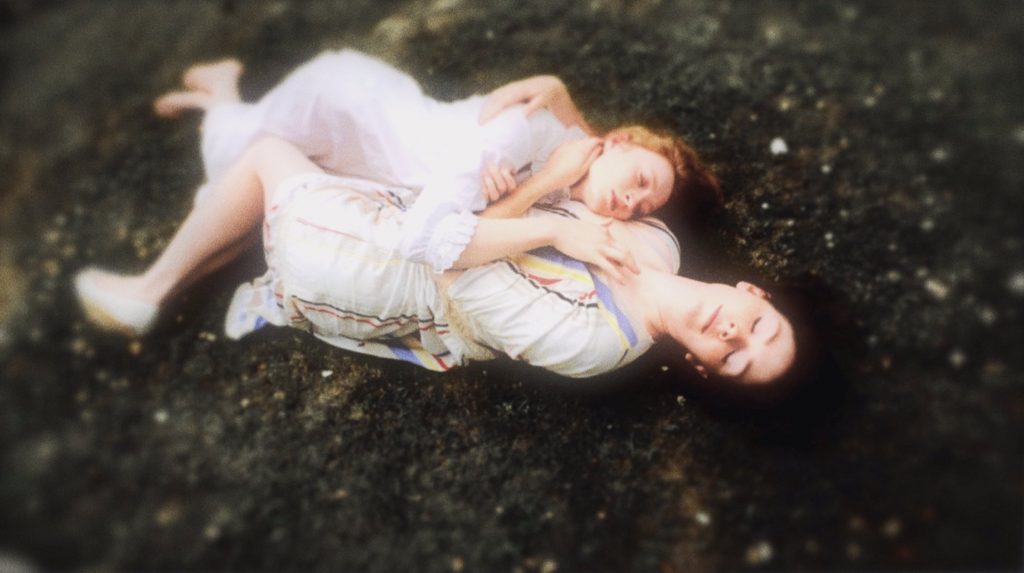
I told Lawrie about the project during a video chat in August, and he seemed impressed by the concept that was allowing me to make the film. He reminded me of my promise to visit Fife. I booked the train for September, and arrived in Kirkcaldy.
It’s probably not a final act twist to say that I loved it in Kirkcaldy. Partly because – and, forgive my ignorance here – I had no idea that it was so close to St Andrews, where Couze had spent his early years in Scotland. Lawrie and Michael took me on a day trip there, and I was moved to walk the same ground that my stepfather trod.
And so, here I am, trying to build a new life in a new place, making new friends and meeting new collaborators. People like Gavin Hugh, who’s bringing creatives together through this site, like Thomas Staunton, a truly brilliant fellow filmmaker, like Craig Lawson, one of the most passionate supporters of indie film I’ve ever met, Lauren Nazri, who’s written my next movie… The list goes on.
Partly through my influence, Hex have organised a series of successful networking events, which started shortly after I moved, to bring potential local collaborators to the church for the first time. Run by Lawrie and Sarah, the events have already gained a spectacular reputation. We’re looking forward to when we can eventually start doing them again.

We’ve also launched a YouTube channel, Channel Hex, to bring collaborators from around the world into the fold. It’s a digital version of the company, with videos that give insight into how we work, and what we care about. It’s also a community focus for like-minded folk to make and show stuff.
At my lowest moment, someone that mattered told me to create. I’m hoping to have a similar influence on the people around me. There’s rich talent in Fife, brilliant filmmakers with plenty to teach me, who I can hopefully help in return. Together, we’ll make movies that’ll bring families together, whether it’s in front of the telly or at the cinema. For a couple of hours, we’ll help those families forget their pain, and in return, forget our own.
Sam Ashurst is the guest on the first Creative Film Fife Network podcast. You can hear Sam’s episode here:
https://www.spreaker.com/user/midgiebitemedia/cffn-podcast-01-sam-ashurst
Channel Hex is available now on YouTube. Our article on Channel Hex is also available here.

